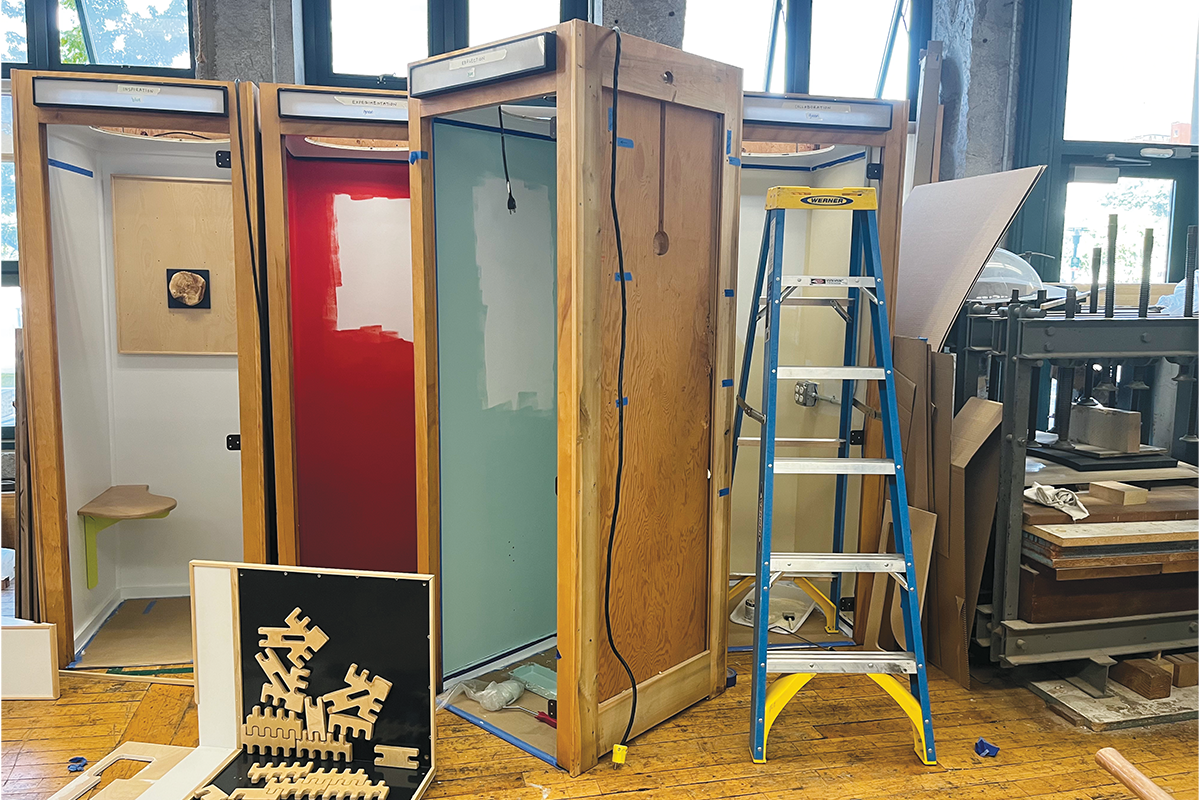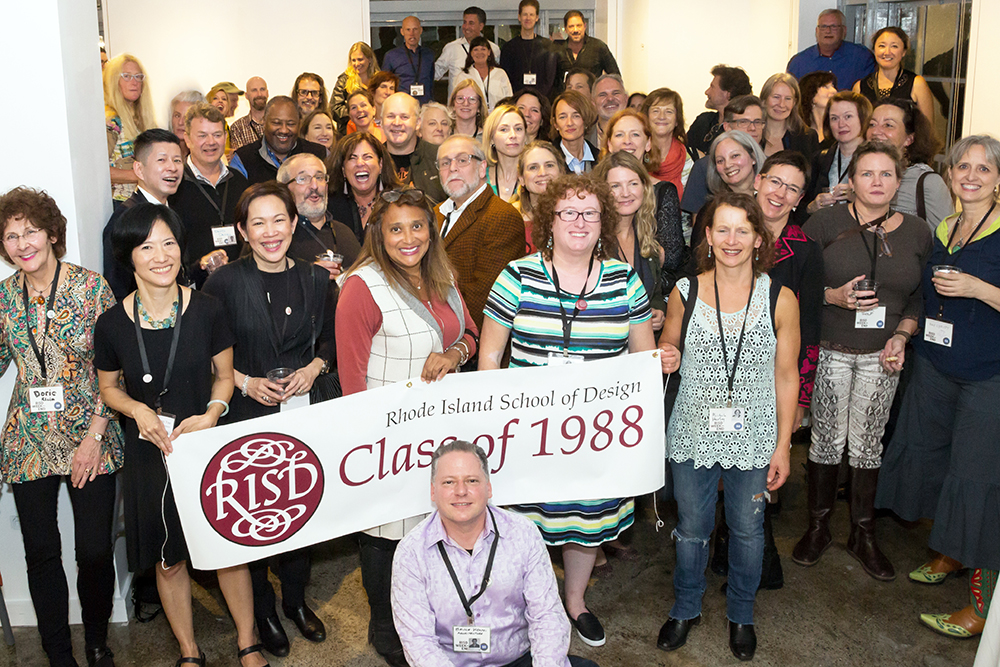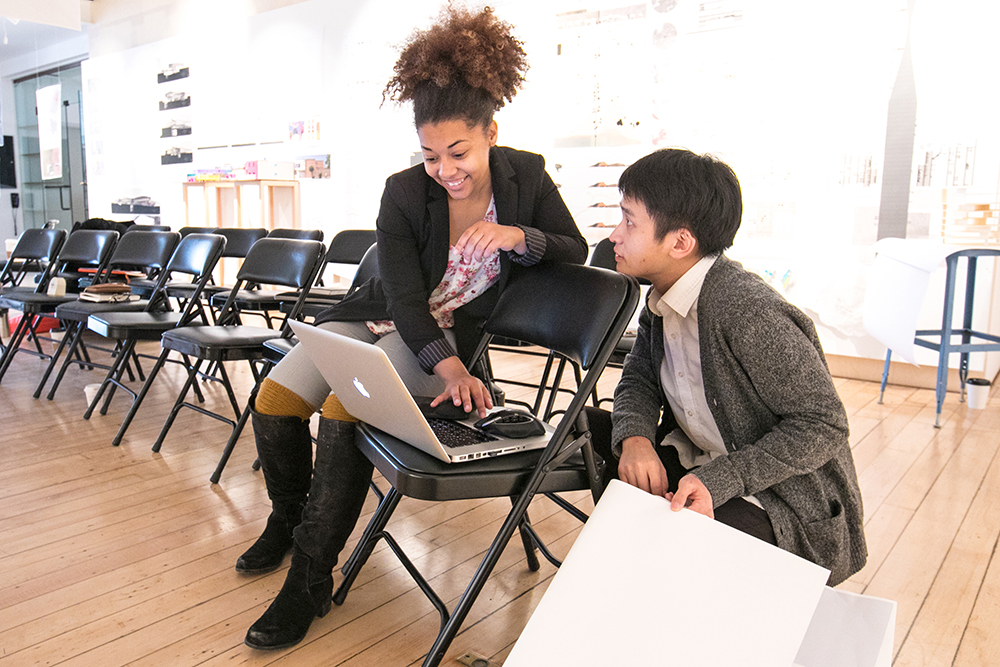
(Not) Phoning It In
RISD designs phone booths for the UN
An idea for a class can come from anywhere. Inspiration hit for Tom Weis, RISD associate professor of Industrial Design, while he was working on a project for the United Nations with his company, Altimeter Design Group.
One of his UN clients told him about the vintage phone booths that used to populate the New York City headquarters. Almost all had been removed from the building over the years, but four remained, and Weis was asked to bring them back to life so that they could be incorporated into a newly renovated office space. Weis thought this sounded like a valuable learning experience for his graduate-level Industrial Design students.
“The academic calendar doesn’t always sync with the rest of the world,” though, says Weis, who discovered to his chagrin that merely penetrating the UN’s formidable layers of security to remove the phone booths from the building and U-Haul them back to RISD’s woodshop took half of the spring semester. The design brief was a little fuzzy too, so by the time the class ended in May, they were just getting into the meat of the work.
Loath to abandon the project, Weis enlisted the help of two graduate students who had taken the class, as well as two Industrial Design alums, to pitch in over the summer.
Weis’s UN client had proposed that the booths exemplify four stages of innovation: inspiration, experimentation, listening and collaboration. For the “inspiration” booth, the design team took their cue from RISD’s Nature Lab, creating a tactile mood board with swatches of stone, shell, fabric and wood, and wallpaper sun-printed with leaves and grasses. In the “experimentation” booth, wooden puzzle pieces on a magnetic wall invite the occupant to slot them together in different patterns.
For the “listening” theme, the student designers envisioned a meditative space sheathed in soft, upholstered fabric. The fourth booth explores the idea of “collaboration” with a light box featuring cutout notches into which visitors can insert acrylic building blocks to create an endless variety of three-dimensional shapes.
Before the team could bring their vision for the booths to life, the vintage structures had to be gutted and cleaned. “They were really filthy,” says Chris Baker MID 25 ID, “with gum under all of the seats, dents and scratches, not super sound structurally and with the original wiring from the 1950s.”
Beyond the challenge of designing something within a 24-inch container, the group also had to contend with the realities of working on a client-based project. “At RISD, obviously people are very creative and imaginative and a lot of ideas are very out of the box,” says Baker. “But when you have a client and strict parameters, you run into very real boundaries and obstacles.”
Color decisions were an ongoing part of the design debate, says Maria Alexia Platia 17 ID, now a graduate student at the Pratt Institute. “They were really trying to push for a palette that fit within the colors of the UN,” she says. “We knew the space they were going in was pretty chromatically dull, with dark-blue carpets. We wanted to bring in something fresh.”
Specifically, recalls Anna Glass MID 24 ID, they planned for one of the booths to lean heavily into green. “We’d send a color palette and they’d say, ‘We don’t like this green.’ Why not? ‘It’s too green.’” That impasse stalled the designers for a while until, on Weis’s urging, they decided to just start building.
“Tom was good at encouraging us to stick to our guns and advocate for our ideas,” says Glass. “So, we used green, but we adjusted it a bit, and they liked it.” It was a question, she says, of finding the balance between “how much feedback to take and how much to trust your gut.”
For Isaiah Aladejobi MID 23 ID, the project was especially meaningful since two of the booths—those with the puzzle pieces and the light box—were drawn from his thesis project, for which he had created a building language influenced by being both first-generation and Nigerian American.
Aladejobi hopes the booths, which the team installed on-site in September, will serve as a “tool to encourage more creativity” and also a “transformative space for individuals to escape to.”
Glass anticipates that as “the only pop of color” they will be a spectacle, but she also hopes that people will “touch things, maybe charge their phones, use them for FaceTime, or just check some emails and sit in a weird spot for a little bit.”

Words by Judy Hill. Photos courtesy of Maria Alexia Platia



